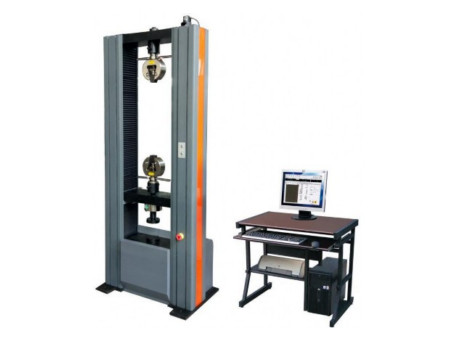- Qinsun Instruments Co., Ltd.
- Tell:+86-21-6780 0179
- Phone:+86-17740808215
- Address:No. 2578 Minhang District Gu Dai Road, Shanghai
- Contact:Mr. Li
- QQ:846490659
How does a universal testing machine work for a tension test?

A universal testing machine is an instrument used to test mechanical properties such as tension, compression, and bending of materials. The following are the general steps for tensile testing:
1. Prepare samples: According to the testing standards and requirements, prepare samples that meet the size and shape requirements. In the tensile test, the sample usually adopts a homogeneous rectangular shape, and the end face of the sample should be ensured to be parallel and perpendicular to the loading direction.
2. Install the sample: Install the sample into the fixture of the testing machine. Make sure the sample is clamped correctly. The fixture can be mechanically, hydraulically or pneumatically clamped, depending on the design of the testing machine.

3. Set test parameters: According to the test requirements, set the parameters of the test machine, including loading speed, loading method (static loading or dynamic loading), initial load, etc. These parameters should be determined based on standard requirements or test purposes.
4. Start testing: According to the set test parameters, start the testing machine to start the tensile test. The testing machine will gradually apply load to the sample until the sample breaks or reaches a preset test endpoint. During the test, the load-displacement curve will be recorded in real time.
5. Data recording and analysis: The test machine measures and records changes in load and displacement in real time. After the test, the mechanical properties of the sample can be analyzed through the load-displacement curve, such as maximum load, yield strength, breaking strength, elongation at break, etc.
6. Clean up and prepare for the next test: After completing the pull test, clean the fixtures and testing machine in preparation for the next test. Take care to properly handle broken specimens to prevent any damage.
It should be noted that when conducting tensile tests, relevant standards and safe operating procedures should be followed to ensure the safety of operators and obtain accurate and reliable test results. The specific test steps and parameter settings should be determined according to the test requirements and equipment characteristics.
What is the formula for tensile testing machine?
The formula for calculating the force or load in a tensile testing machine is quite simple:
Force (F) = Load (L) / Cross-sectional Area (A)
Where:
- Force (F) is the applied force or load in Newtons (N).
- Load (L) is the reading obtained from the tensile testing machine in Newtons (N).
- Cross-sectional Area (A) is the cross-sectional area of the specimen in square meters (m²).
The formula essentially relates the force being applied to the specimen to the cross-sectional area of the specimen. By measuring the load applied and knowing the cross-sectional area, the force exerted on the specimen can be determined.
It's important to note that the cross-sectional area used in the formula should be calculated based on the specific shape and geometry of the specimen being tested. For example, for a circular cross-section, the area can be calculated using the formula A = π * (d/2)^2, where d is the diameter of the specimen.
It's recommended to consult the user manual or operating instructions provided by the manufacturer of the specific tensile testing machine being used, as they may provide specific guidelines for calculating and interpreting the force readings obtained during testing.





